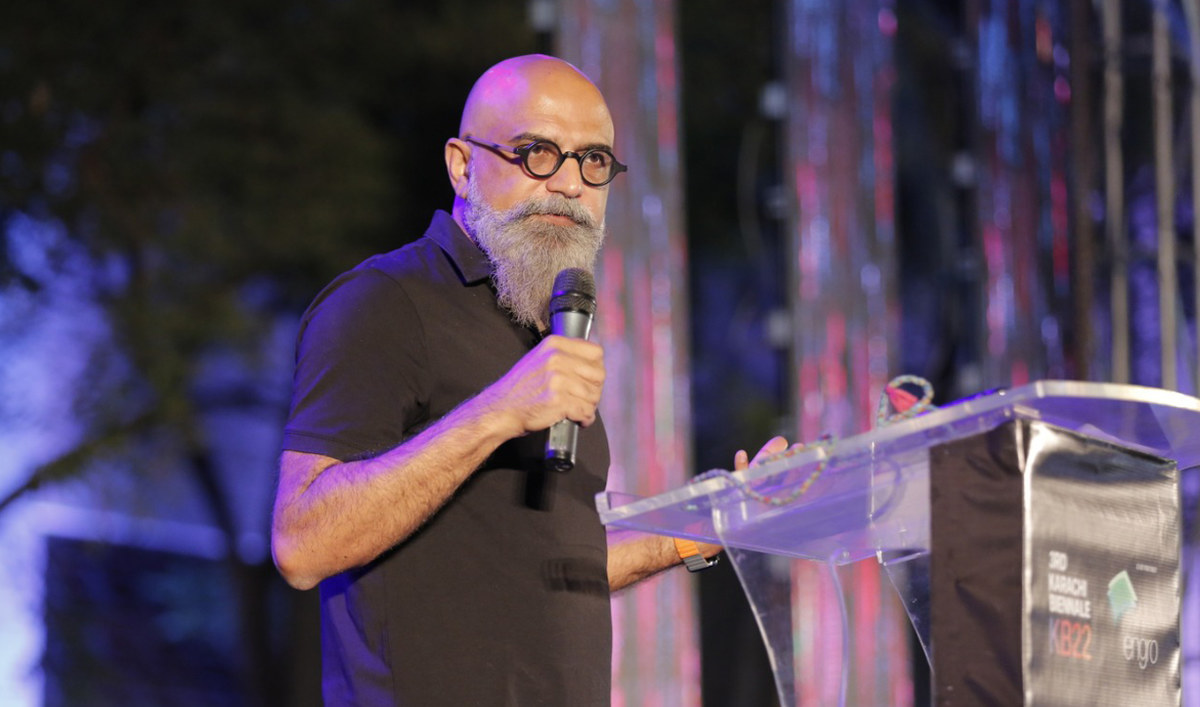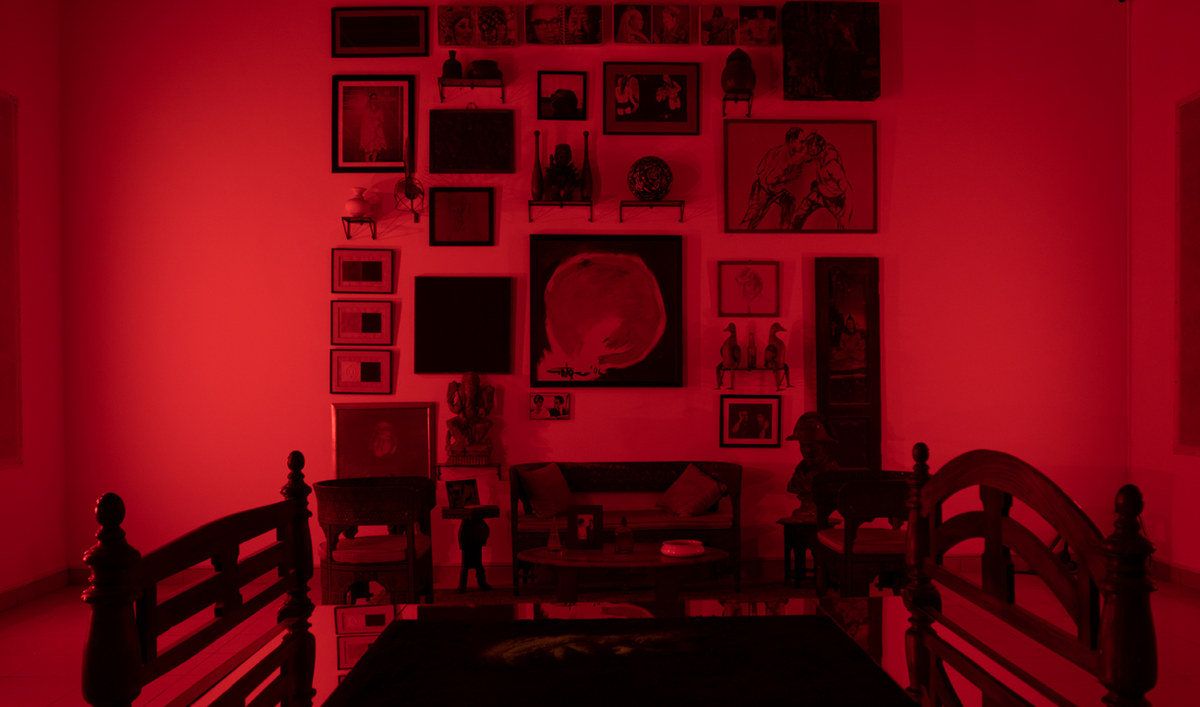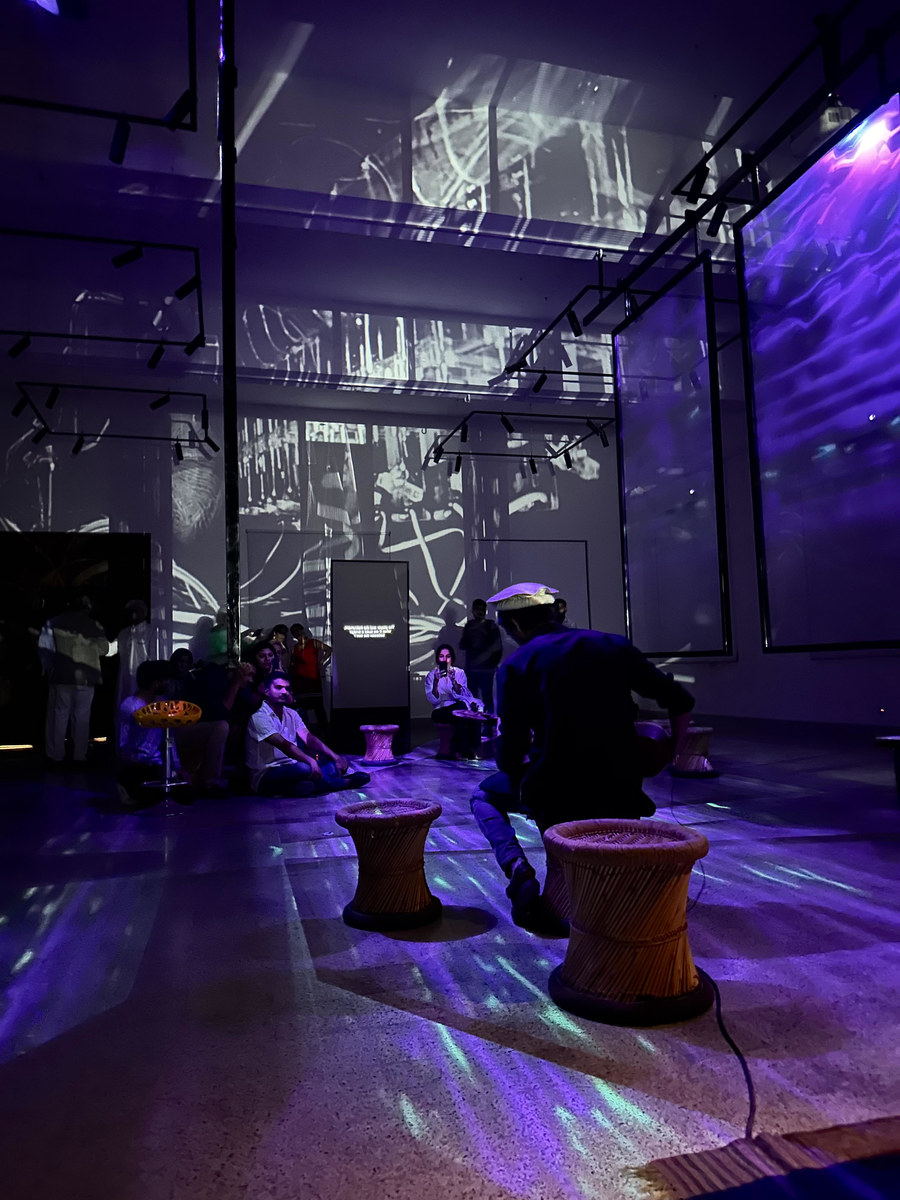KARACHI: The Karachi Biennale, Pakistan’s largest international, contemporary art forum, has kicked off in the port city, aiming to explore the intersection of art and technology and showcase works by artistes from Pakistan and 13 other countries, organizers of the show said.
This year’s edition of the event will run from October 31 to November 13, with international exhibitions, talks and performances at nine venues across Karachi.
The Karachi Biennale Trust (KBT) was founded in 2016 by a group of art professionals and educators as a platform to promote creativity, innovation and criticality in the visual arts. The Karachi Biennale connects “art, the city and its people, and acts like a temporary museum showcasing leading artists in Karachi,” the website for KBY says.
The first edition of the forum, in 2017, was themed ‘Witness’ and invited artists to introspect on their personal, political and social experiences through art and performances. The second biennale in 2019 focused on climate change and the devastating ‘development footprint’ on the ecology of Karachi and other cities. At this year’s festival, or KB22, artists will exhibit works under the rubric, ‘Collective Imagination: Now and the Next,’ capturing the expanding integration of technology with art.
“We felt technology would really push us in a different direction,” Niilofur Farrukh, KBY Managing Trustee, told Arab News at the festival’s inaugural ceremony on October 29, 2022.

Managing Trustee of Karachi Biennale Trust and Karachi-based art interventionist, Niilofur Farrukh, addresses the inaugural ceremony of the Karachi Biennale 2022 at the NJV School in Karachi, Pakistan, on October 29, 2022 (Photo Courtesy: KB22)
“We are celebrating 75 years of Pakistan and it is the youth who really need to be a part of art. Technology resonates with them and they are at the moment consumers of technology who go beyond that and become innovators or disruptors. That is what we would like out of this [KB22].”
The event also aims to connect the past and the present “so, a lot of our work is installed in heritage sites,” Farrukh said.
Faisal Anwar, a new-media artist who is the curator of KB22, said this year’s theme was a “reflection of contemporary movements across the globe” where technology and social media were shaping the human and artistic experience.

Curator of KB22, Faisal Anwar, speaks at the inaugural ceremony of the Karachi Biennale 2022 at the NJV School in Karachi, Pakistan, on October 29, 2022 (Photo Courtesy: KB22)
“From the Islamic golden age and European Renaissance art to contemporary and the New Media art, artists as alchemists, scientists, engineers and creative innovators have embraced technology to find original and creative ways of expression,” Anwar told Arab News. “My inspiration was to bring together artists from all over the world to share those stories with people of Karachi and globally as well to celebrate that movement.”
Pakistani artists participating in KB22 include Amin Gulgee, Yasir Darya and the KCR (Karachi Community Radio) Studio, to name a few, while the international artist lineup includes Canadian art collective Audio Placebo Plaza (Julia E Dyck, Erin Gee, Vivian Li), Paris-based visual artist Justine Emard and Spanish artist Solimán López.

Artist Amin Gulgee's installation, the Memory Room, at the Karachi Biennale, Karachi, Pakistan, on October 29, 2022 (Photo courtesy: Haya Faruqi)
“For this biennale, I have done an installation called the ‘Memory Room’ and then there will be a performative work on ‘The Forgotten March’,” Gulgee, who was the curator of KB17, said. “I want it to be an experiential installation and evoke all the senses — sight, sound, touch, smell.”
The nine venues for this year’s biennale include Hamid Market, NJV School, Jamshed Memorial Hall, Sambara Gallery, and the IVS Gallery at the Indus Valley School of Art and Architecture in the southern part of Karachi. All exhibits and 26 immersive art projects are free for members of the public who will get to experience virtual reality, artificial intelligence and sensory, kinetic and creative computing in the works on display.

Chitrali born rubab player Irfan Taj plays rubab alongside a mechanized Chitrali Sitar at KCR's installation, Saaz | ساز during the inaugural ceremony of Karachi Biennale 2022 at the NJV School in Karachi on October 29, 2022. (Photo Courtesy: KB22)






















